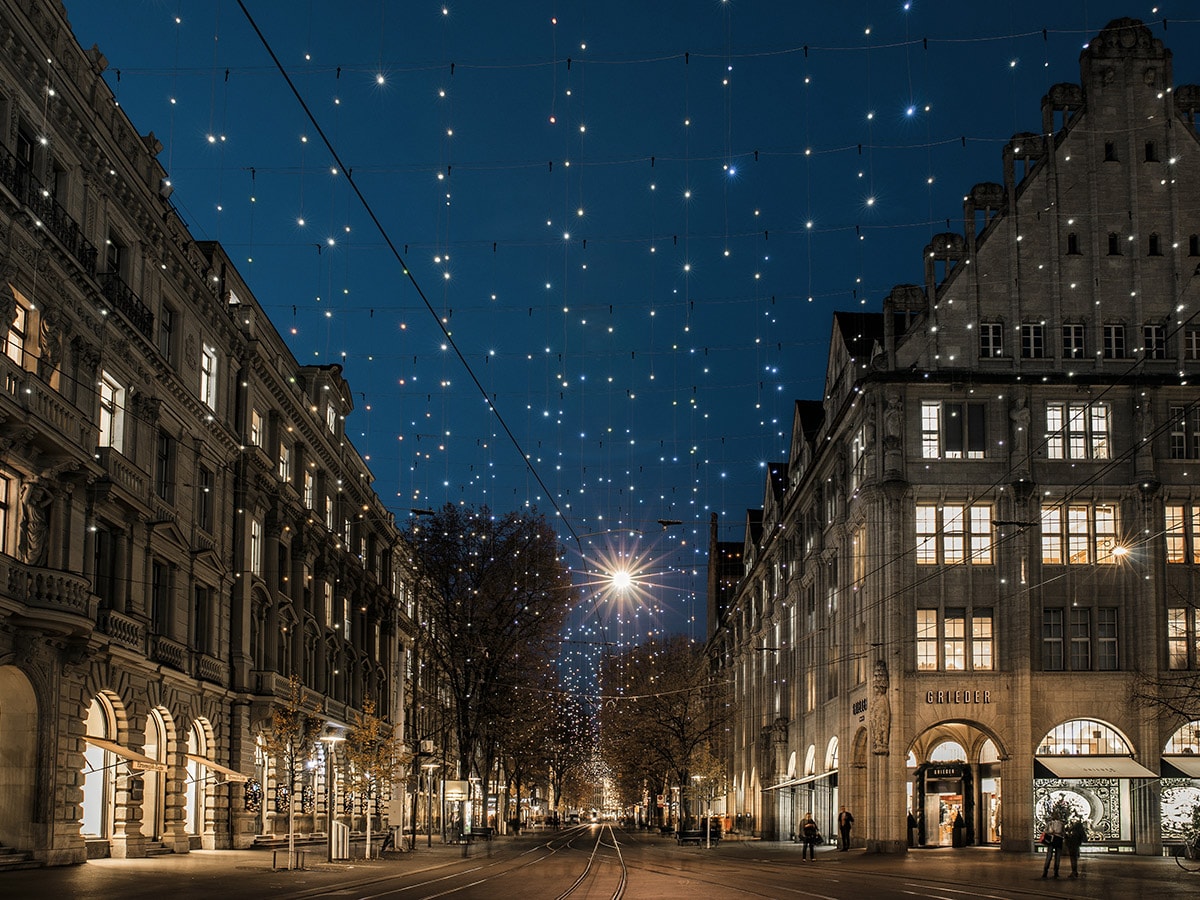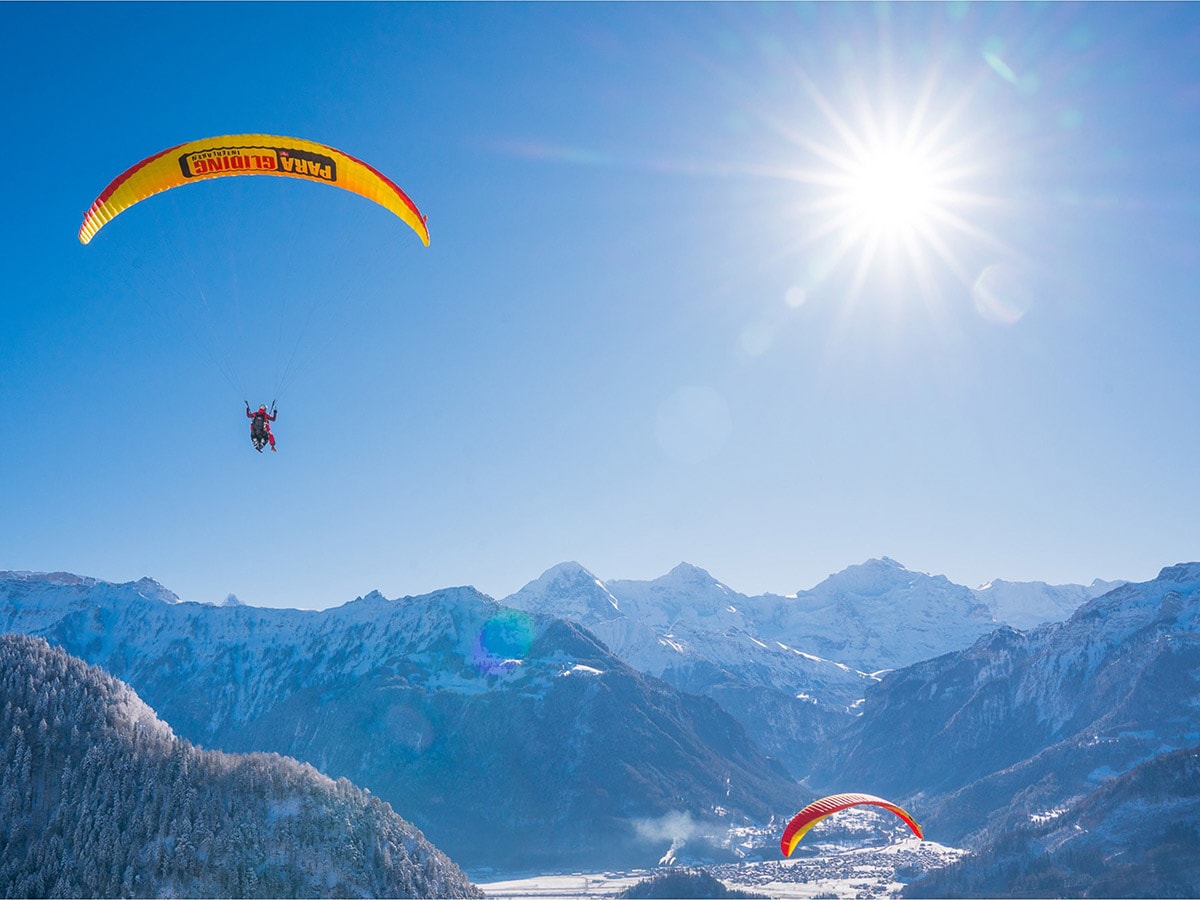Martin Nydegger, CEO, Switzerland Tourism. Image: Courtesy Switzerland Tourism
It was filmmaker Yash Chopra who ignited Indians’ desire to visit Switzerland. Prominent films by Chopra, like Dilwale Dulhania Le Jayenge, Darr, and Chandni were shot in the country. In fact, in 2016, Interlaken, a traditional resort town in central Switzerland, honoured him for boosting the popularity of the Alpine nation among Indian tourists.
Switzerland, a landlocked country located in Central Europe, is bordered by Germany, France, Italy, and Austria, and is characterised by its stunning alpine landscapes, rolling hills, and numerous lakes, with the Swiss Alps dominating the southern region. Covering an area of approximately 41,290 sq km, it has a population of around 8.5 million, with four official languages: German, French, Italian, and Romansh.
Traditionally, Indian tourists have favoured summer for family travel, particularly during school holidays, often visiting colder countries in May and June to escape the heat. Recently, however, preferences have shifted, with a broader profile of tourists now visiting countries like Switzerland year-round. As per Switzerland Tourism, a second peak is emerging in autumn and early winter, attracting couples, friends, and solo travellers interested in experiencing the region’s fall colours and local Christmas markets, along with various winter activities such as sledding and snowshoeing.
According to Switzerland Tourism, as of 2023, Indian tourists accounted for 602,000 hotel overnights, a figure projected to rise to 907,587, an almost 50 percent increase over the next five years, reflecting a significant rise in demand. The emphasis on diverse travel seasons is likely to further enhance overall growth in visitor numbers.
In conversation with Forbes India, Martin Nydegger, CEO, Switzerland Tourism, talks about the patterns of Indian tourists in the country, lesser known gems to visit, sustainable tourism and more. Edited excerpts:
Q. How do you see the travel patterns of Indian tourists evolving, and according to you, what specific interests do they have when visiting Switzerland?
I think the desire and the love from India to Switzerland probably hasn’t changed that much. It’s about landscape, nature, and the mountains. And I believe it was initiated with the beautiful Bollywood movies shot there. That was the kickstart of the love relationship between India and Switzerland long ago, and it kept going because it was the best possible way to showcase Switzerland, owing to the undivided attention on the screen. And I think, to this day, we’re profiting from the initiative, although today we have a much wider range of communication tools. But there are a lot of things that have changed as well. People’s taste has changed, their desires have changed, and the maturity of travel obviously, has evolved too. But the core desire why Indians want to visit Switzerland is still the mountains and picturesque and romantic landscape.
Q. Which Swiss destinations are currently the most popular among Indian travellers, and are there any lesser-known gems?
Earlier, travellers followed this phenomenon of visiting only the highlights of a country or a continent, which means the Eiffel Tower in Paris or a church in Italy, or a fountain somewhere else. Now, travellers, including Indian and other global travellers, know more about the world, either because they are already experienced in travelling themselves, or because they have much more information about places owing to digital tools, and they can plan their travels tailormade to their interests. That’s a good thing because not everybody wants to go to the same place at the same time.  Autumn in Switzerland. Image: Courtesy Switzerland Tourism
Autumn in Switzerland. Image: Courtesy Switzerland Tourism
For Indian tourists, summer is the strongest season, that is the phase between April to June. And now what Switzerland Tourism is trying to do is to really showcase other seasons as well. And I would point out two seasons in particular—autumn and winter. The autumn season in Switzerland is particularly special. The colours, the atmosphere, are all just mystical. Some might even call it a little bit melancholic, but I think that’s part of the mystique. I think it’s an undiscovered season in Switzerland. I am not naming a destination in particular but autumn in Switzerland is a gem, definitely.
And then second is winter. Winter there doesn’t necessarily mean that you need to know how to ski. There’s so much more to do. There are carnivals and Christmas markets. The same mountains, the same villages, the same landscape looks completely different in winter as compared to the summer. And that’s the beauty of the country. In winter it’s quiet because the snow swallows the noise. It’s very peaceful and fascinating.
Q. How does Switzerland cater to the cultural and experiential preferences of Indian tourists?
There definitely are a lot of experiential activities for Indians. We know that Indians love soft adventures. There are a number of boating experiences, cruises, ski experiences, etc. If we talk about food, for example, Switzerland is great to eat vegetarian food as well, and there’s great Swiss wine too. There are a number of Indian restaurants and Indian chefs too who cook in some of the most comfortable, beautiful hotels and stays, which is again something Indians enjoy.
Q. Switzerland Tourism associated with Neeraj Chopra as its Friendship Ambassador a couple of years ago. How do you see it in promoting Swiss tourism in India?
It’s been great working with Neeraj Chopra. After his first visit to the country, we saw him post a photograph of Switzerland with the caption saying how much he loves the country. We are inspired by his authenticity, generally, and saw a role model in him for all of the youth. And we thought he is somebody who enjoys the outdoors, and was a perfect fit to make more and more Indians see the value of doing things outside. He really is a very down to earth person who is passionate about Switzerland, and that is what we really appreciate.
Q. With sustainability becoming a key concern for travellers, how is Switzerland Tourism adapting to this trend?
Switzerland has been sustainable, or sustainability enabled for as long as I remember. This is not a discipline or a topic we need to learn or to be sensitised. We know that nature is the core asset of what makes our country, especially where tourism is concerned, and in other industries as well.
Switzerland Tourism is an organisation that has existed for 110 years, and we constantly ask the tourists: Why do you love Switzerland? And it’s the most boring survey ever because for 110 years, the answer is always the same. It’s always landscape, nature, mountains, so that this is really also unchanged. We are very aware of what actually matters to them, and so we need to make sure that we can protect it but at the same time, also use these natural resources. And we don’t want to put just a fence around it and say don’t touch it. Instead, we want to find that exact balance. I think tourism is an elegant and smart bridge between actually appreciating nature and its relevance and at the same time experiencing it. Swiss truly believe in the strength of nature, so we want to protect it, but at the same time we want to make it available so that others can connect with it too.
Also read: India among the top 40 countries enabling travel and tourism: World Economic Forum
A couple of years ago, we decided to showcase our belief in sustainability, and we designed a Swisstainable campaign. It is a core programme where the service providers like hotels, transportation, restaurants, and the entire tourism industry can participate. We also focus on sourcing local goods for culinary experiences, as per the seasons.
Q. There have been talks of over-tourism in Europe, and that is taking a toll on the countries and the industry. What measures is Switzerland taking to combat overtourism, particularly in popular destinations?
There is a problem of over tourism in some places in Europe, but I don’t think Switzerland faces that. There is obviously heavy footfall at certain times, and certain places, but that’s normal and manageable. If there are about 200 destinations to visit in Switzerland, maybe about three or four destinations sometimes see overtourism.
Also read: Katra, Kasauli, Kashmir: Five-star hotels expand to underserved markets
There are three phases in tackling overtourism. One is avoidance by making sure not everybody is travelling at the same time to the same place. We do that by trying to plan and divert during the travel planning phase. Second is when people actually do travel during the high seasons, we make sure that there are compatible modes where people can travel constantly without having to stop because of crowds, so managing that. And the third phase is when it’s too late, and then we need to take measures on the spot, and that’s then the responsibility of the destination, because it differs from destination to destination. Sometimes it’s actually a volume, so we need to work with logistics. Sometimes it’s not volume, and has more to do with harmony between the locals and the visitors, because maybe there’s a new culture entering a village which the village is not prepared for, so we need to do intercultural management, or intercultural competencies.  Zurich, financial hub of Switzerland. Image: Courtesy Switzerland Tourism
Zurich, financial hub of Switzerland. Image: Courtesy Switzerland Tourism
The key is to make sure it doesn’t happen, to avoid it in the beginning. We can do that by making sure that people travel in different seasons and are spread all over the places, discovering lesser known gems and well-known places. Another way we can avoid it is by extending people’s stay, making sure they’re not just coming for two days, because if they come for two days, everybody ends up in the same space. If people are putting in so much time and money, we want them to get the best of Switzerland.
Q. What new initiatives or plans do you have in place for 2025 to attract more tourists from India and around the world?
First of all, we want to promote the ‘All four seasons’ strategy. There are a bunch of activities planned in places like Zurich, Lucerne and Interlaken for all the four seasons. For example, in Zurich, the financial hub and largest city in Switzerland, there are a lot of experiences beyond its urban allure, including diverse gastronomy, outdoor activities, and opportunities for extended stays throughout the seasons. Autumn, with its vibrant colours and crisp temperatures from October to December, is an ideal time to explore a different facet of the city. Lucerne, Switzerland. Image: Courtesy Switzerland Tourism
Lucerne, Switzerland. Image: Courtesy Switzerland Tourism
In winter, the city of Lucerne transforms into a magical destination, illuminated by the sparkling lights of traditional Christmas markets, music festivals, and the renowned LiLu Light Festival. There’s a new ice rink that enhances the festive atmosphere, complete with live concerts, fondue, and mulled wine. The city also offers numerous winter excursions and sports in the nearby mountains. Adventure capital of Europe – Interlaken, Switzerland. Image: Courtesy Switzerland Tourism
Adventure capital of Europe – Interlaken, Switzerland. Image: Courtesy Switzerland Tourism
Interlaken, known as the adventure capital of Europe, is a year-round playground. From paragliding and kayaking to canyoning and skydiving, the city provides thrilling activities for adrenaline seekers in every season.
